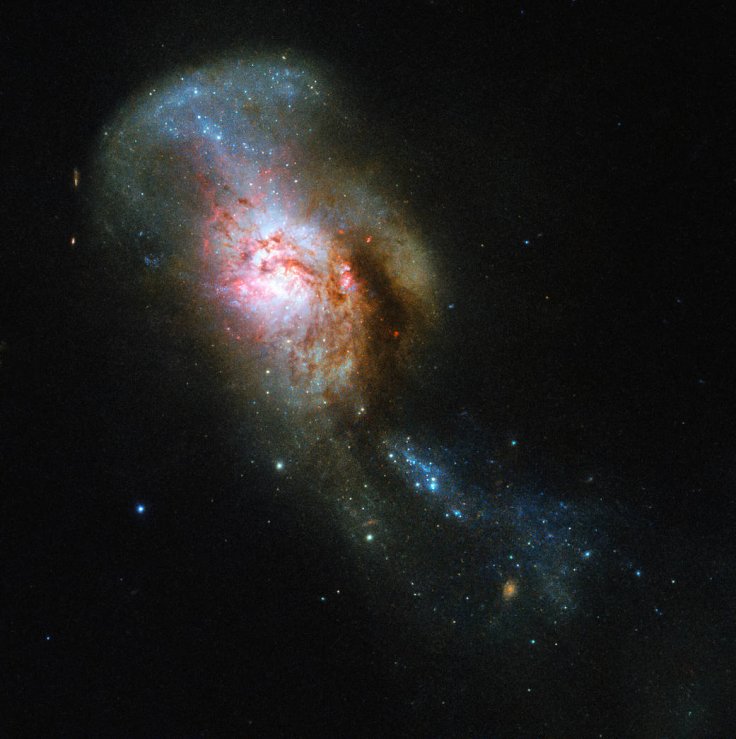
NASA and the European Space Agency's (ESA) Hubble Space Telescope captured a beautiful photo of a pair of merging galaxies. Due to the distinct appearance of the galaxy formation, it was named after the Greek mythological character Medusa.
NGC 4194, also known as the Medusa Merger, is located about 130 million light-years from Earth. It is situated in the constellation Ursa Major, which is also called the Great Bear.
According to NASA and the ESA, the Medusa Merger was formed after two galaxies collided with one another. During the collision, the larger of the two galaxies consumed the other one, which was rich in gas.
The major collision resulted in the merging of the two galaxies and a stunning display of stars, dust and gas as they interacted with one another. In the photo taken by Hubble, reddish streams composed of stars and dust can be seen near the upper portion of the galaxy. These streams are the main reasons why NGC 4194 was named after Medusa, a mythical creature with venomous snakes on its head instead of hair.
"An early galaxy consumed a smaller gas-rich system, throwing out streams of stars and dust into space," the ESA said in a statement. "These streams, seen rising from the top of the merged galaxy, resemble the writhing snakes that Medusa, a monster in ancient Greek mythology, famously had on her head in place of hair, lending the object its intriguing name," the space agency added.
Aside from the streams filled with stars and gas, another noticeable feature of the Medusa Merger is its bright center, which NASA and the ESA refer to as Medusa's Eye.
According to the space agencies, this region was formed after cool gas from the merging galaxies began to accumulate in the center. The buildup of cool gas then led to the formation of new stars in the region, causing it to appear brighter compared to other parts of the galaxy.
"The legend of Medusa also held that anyone who saw her face would transform into stone," the ESA stated. "In this case, you can feast your eyes without fear on the center of the merged galaxy, a region known as Medusa's Eye. All the cool gas pooling here has triggered a burst of star formation, causing it to stand out brightly against the dark cosmic backdrop."









